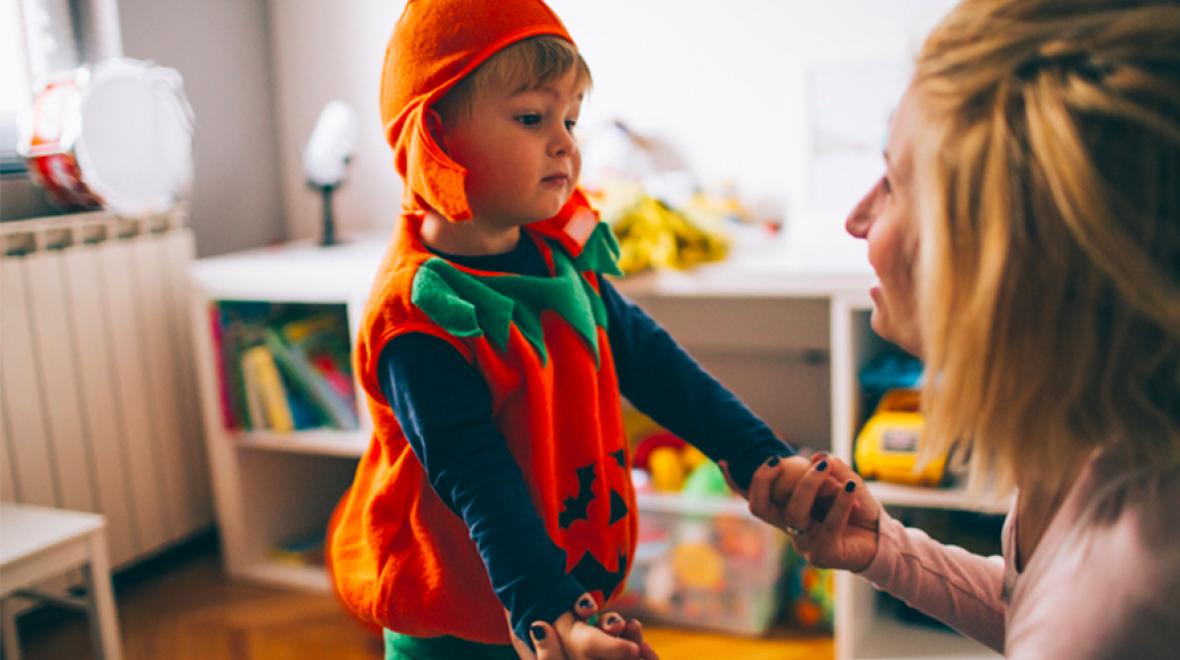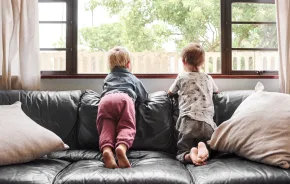
It’s October, which means the bloodthirsty vampires, cackling witches and brain-eating zombies are out in full force, haunting all the seasonal hayrides and corn mazes. ’Tis the season for being scared silly — or just plain scared, depending on your threshold for all things wicked.
Although many kids love the ghostly, ghastly fun that comes with Halloween, it can pose a unique set of challenges for neurodiverse children.
The typical thrills and chills associated with the holiday may seem overly intense or unpredictable. There are lots of social demands involved with trick-or-treating, such as making eye contact and expressing appropriate greetings. Plus, donning a costume — and keeping it on for more than five minutes — can set off several sensory-related triggers.
Here are a few expert-approved tips for making Halloween celebrations a little easier. But remember that plenty of kids, including neurotypical ones, are just not fans of the spook-tacular fun that happens on Oct. 31. (And that’s okay!)
Get crafty with costumes
Itchy or uncomfortable fabrics, vision-restricting masks, claustrophobic capes and heavy headpieces — the possibilities for costume-related pitfalls are endless, but you can avoid many of them by steering clear of store-bought options and taking the DIY route.
“You can make just about any costume starting with a sweat suit as a base,” says Wendela Whitcomb Marsh, M.A., BCBA, RSD, an autism specialist and board-certified behavior analyst. “One with a hood is a great idea for kids who like to hide by pulling the hood down.”
Once you have these basic separates, you can attach simple craft materials (felt, ribbons, feathers, belts or backpacks, insect wings, etc.) and offer lightweight or easy-to-carry accessories. This approach allows you to customize your child’s costume while maximizing their comfort, and that can lead to fewer sensory-related meltdowns.
“When comfort is up, stress can go down,” says Marsh.
Plan ahead for social events
Unpredictability can be intensely upsetting for any kid, and especially neurodiverse ones, so social events like Halloween parties — where it seems like literally anything could happen — are often stressful. These events are also usually loud and crowded, two major sensory triggers. To help your child prepare for the overwhelming nature of a Halloween party, take some time to go over what they might encounter. Talk about where the party will be held, what kind of people they should expect to be there, and what kinds of things they might see or hear (such as loud music, creepy decorations, painted or masked faces).
“You could [also] create a social story or find one online about Halloween parties to help your child get used to the idea, and show pictures of the place you’ll be going and the people you’ll see, if possible,” advises Marsh.
Pediatric occupational therapist Sarah Selznick agrees, offering advice specific to children on the autism spectrum.
“Children with autism often benefit from having a visual schedule of activities so they can prepare,” she says. “Writing down a list of the events of the night or using pictures to illustrate what’s expected can be very helpful.”
Build in breaks
No matter how well you prep your child, they’re still likely to need to take a break at some point to avoid becoming overstimulated or agitated. This is totally normal, so try to anticipate it rather than fight it.
“Taking a break is essential,” says Selznick. “Create a plan for how, when and where your child can take a break away from the festivities.”
Marsh agrees, suggesting that caregivers contact the hosts of the party in advance to inform them that your child has neuro differences and may have some sensory issues during the event. Ask if there will be a quiet and private place for them to retreat to, should they need time alone to regroup.
Practice, practice, practice
Neurodiverse kids are often more successful navigating social situations when they’ve had a chance to practice or role-play before the big day.
“Read stories, watch videos and use pretend play [with] puppets or dolls to practice the social demands of the holiday,” says Selznick.
Some kids may just need a simple overview about the do’s and don’ts of trick-or-treating (e.g., do say “thank you” when candy is given, but don’t go inside someone’s house when they open the door). For other kids, more elaborate practice may be needed.
“Enlist family and friends to come over for a practice trick-or-treat session at your home,” explains Marsh. “Have each person stationed behind the door of a different room, with a healthy snack or small toy, then go with your child from door to door around the house practicing knocking and saying, ‘Trick-or-treat!’ and ‘Thank you,’ with prompting from you.”
Have an exit strategy
Unfortunately, the best-laid plans don’t always go smoothly, and it helps to have a backup plan in case your child becomes too stressed and needs to leave a party or trick-or-treat session early.
“Let your hosts know that you might have to leave suddenly, so they won’t be surprised, and if you have other children, arrange for a parent or family member to stay and let them enjoy the festivities,” says Marsh. “It’s better to show up for five minutes of the party than to overstay your child’s tolerance level.”
Editor’s note: This article was originally published a few years ago, and updated in September 2022.











